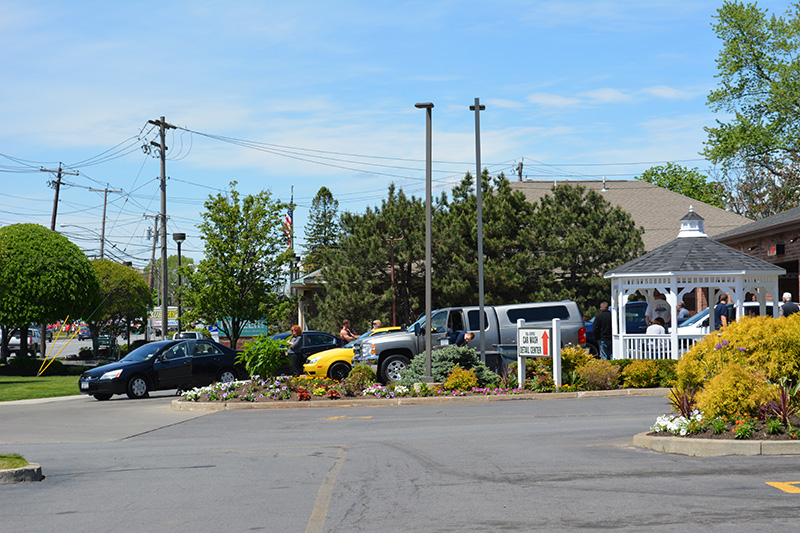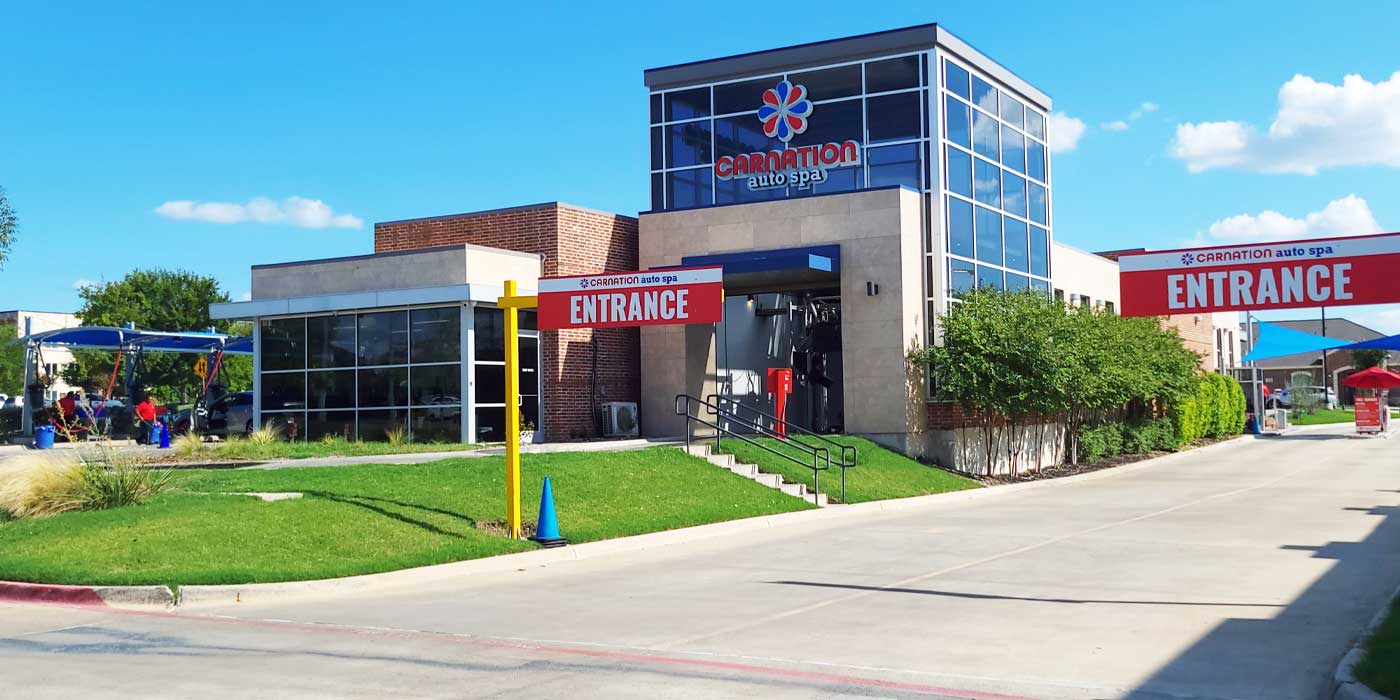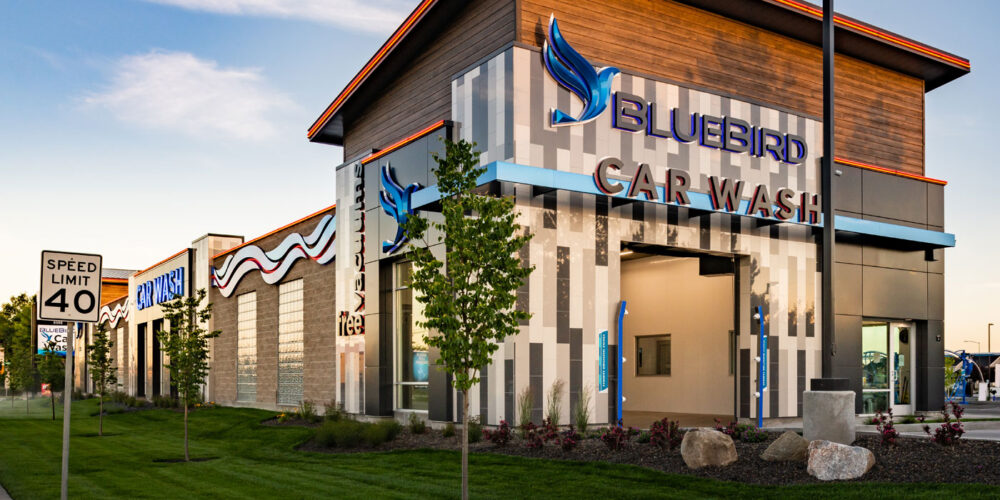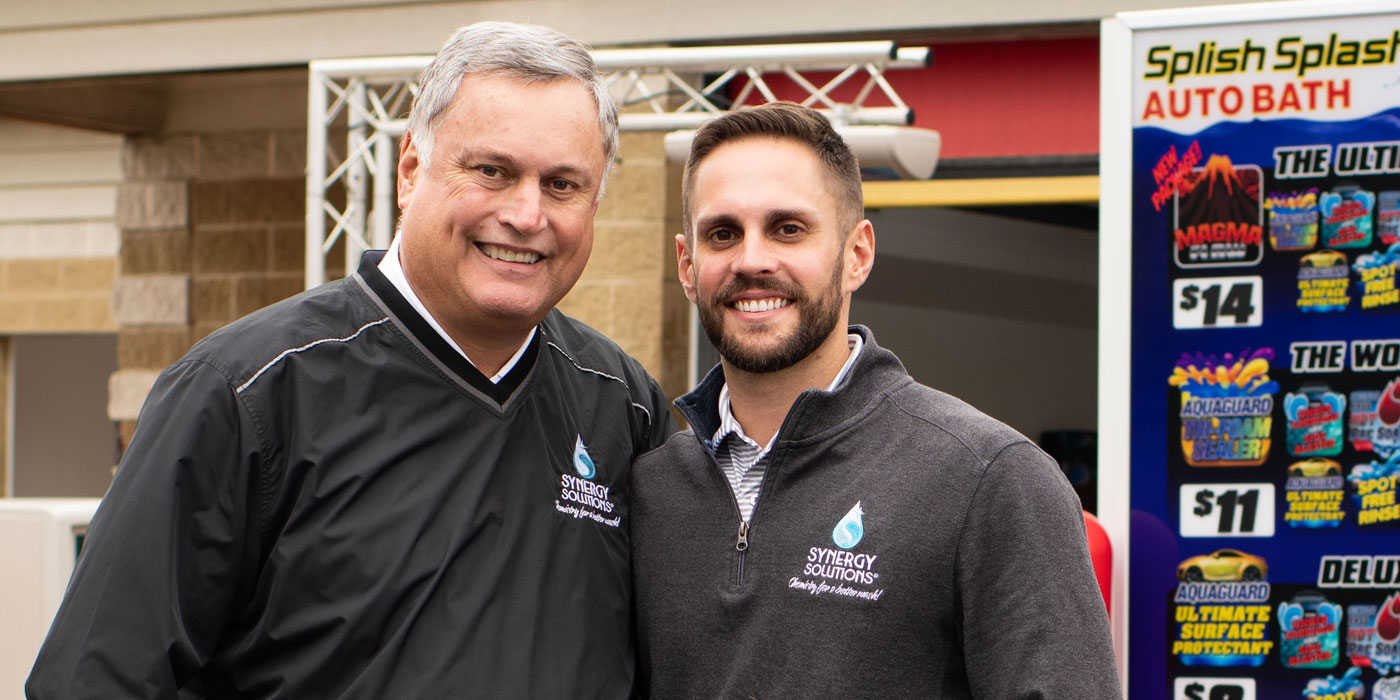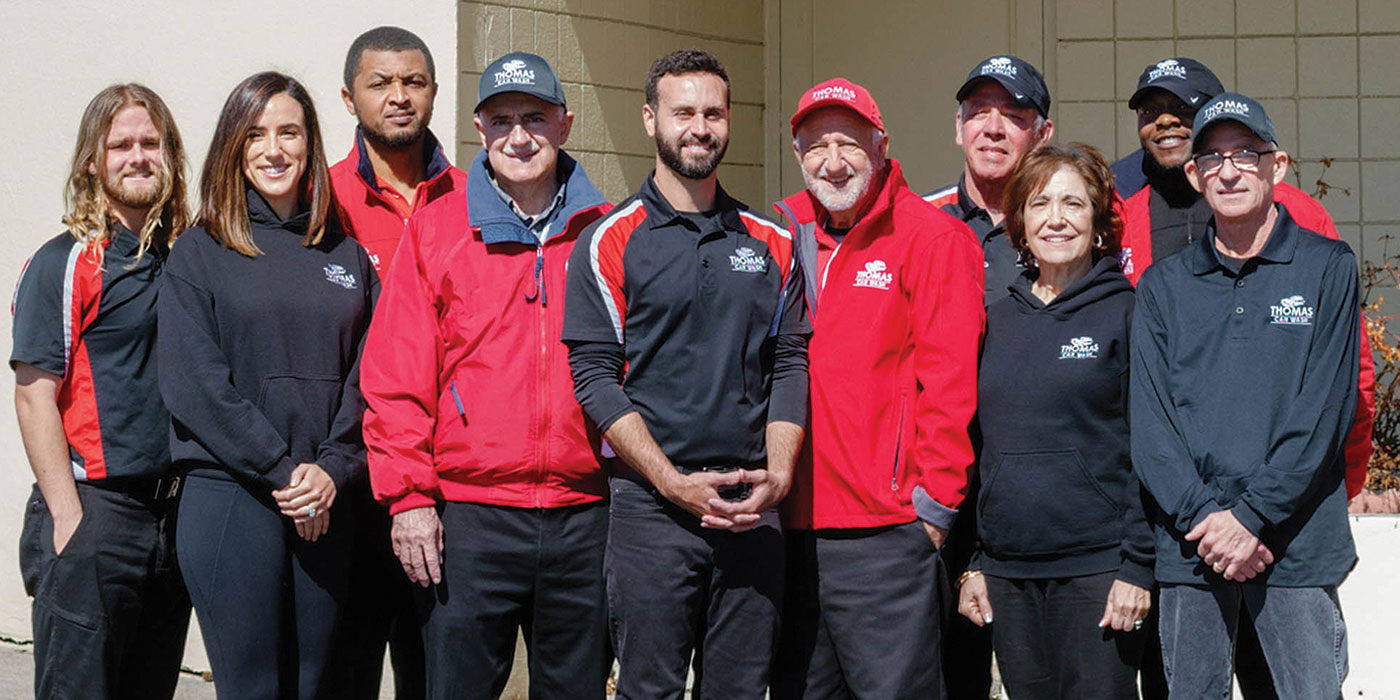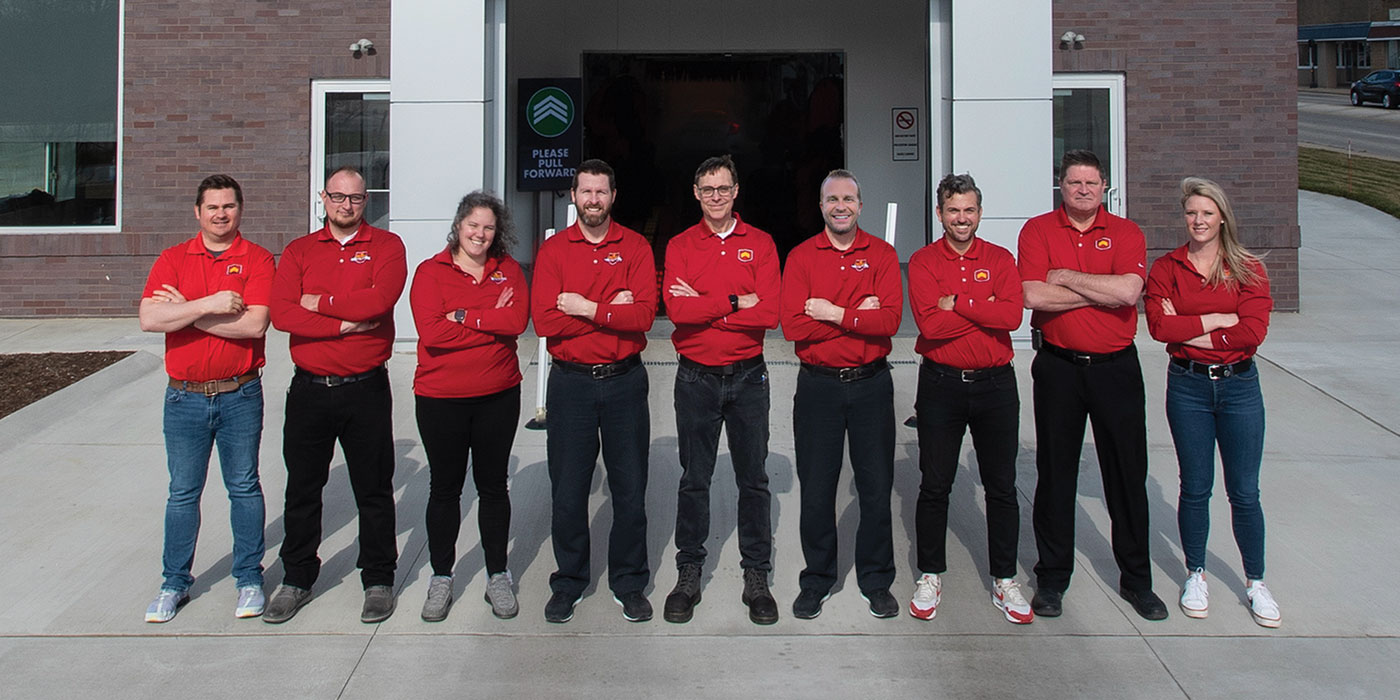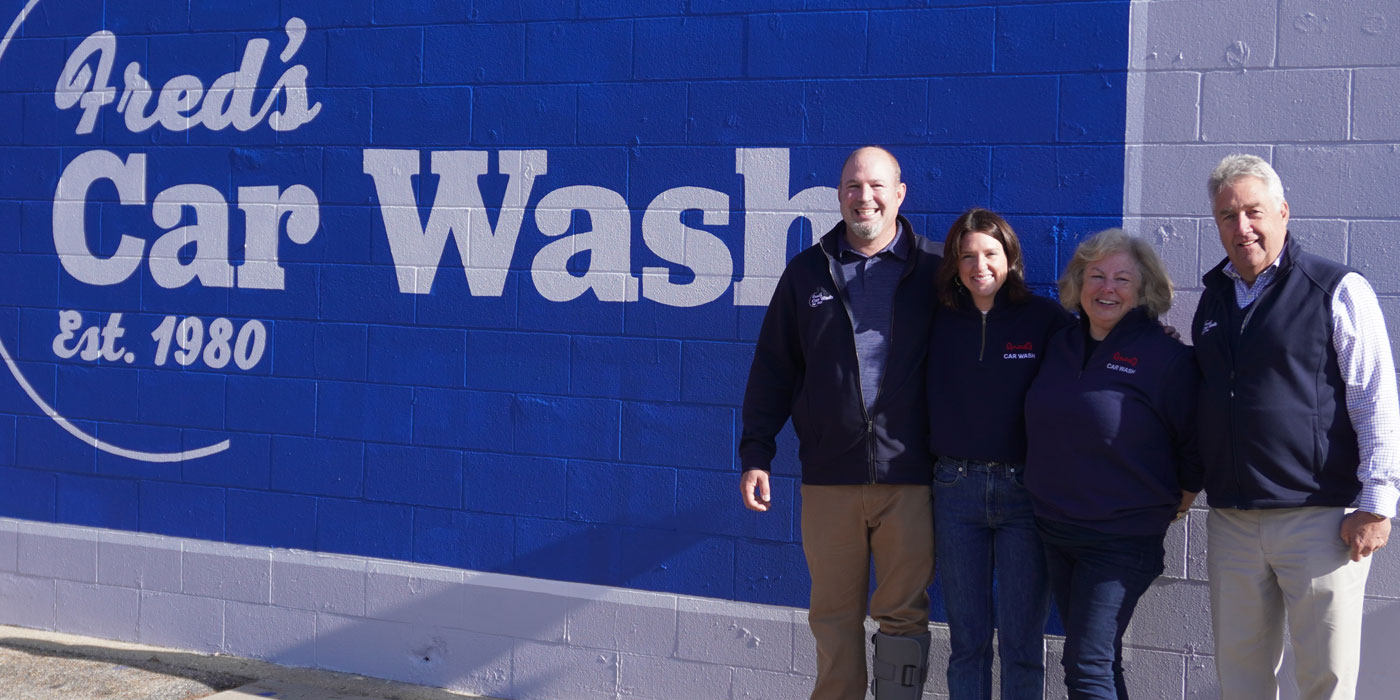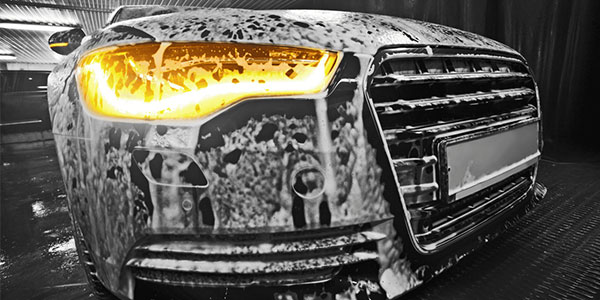Full service, flex service and detailing. What’s the difference? On some level, they all involve a more thorough cleaning than pushing a car through a tunnel — and therein lies the value of these services.
Full service carwashes provide hand-finished services at the tunnel’s exit, such as vacuuming, window cleaning, drying, applying tire shine and so on. Detailing pays greater attention to cleaning a car and making it shine, with services like high-speed buffing and wet sanding and compounding. It also usually takes the longest time to complete. Some full-serves may offer full detailing, or they may opt for “express” detailing, which offers similar, though less intensive, services done in around 15 minutes.
So, what does a flex-serve do? Actually, it depends on who you ask, because the definition varies from carwash to carwash. According to Bud Abraham, president emeritus of Detail Plus Car Appearance Systems, the original flex-serve model, as introduced by Steve Okun, took the full-serve and detailing concepts and put them together. In this model, there were two exit cells at a carwash. The first cell offered traditional full-serve services. The second cell was, in a sense, similar to today’s express detailing, which included express carpet and seat shampoos, express wax and any other service that could be completed, ideally, in 30 minutes or less, Abraham explains.
Today, however, the definition of a flex-serve has generally morphed into being an express exterior site that adds one or both of the above options, with a limited array of services, to its exit end. Regardless of which services you choose to offer, adding on these flex services to your existing carwash can generate significant profit, if done correctly.
Is there a need for flex service?
In recent years, the new build trend in carwashes has most definitely swung in favor of express carwashes.
Robert Andre, vice president of customer success for SONNY’S The CarWash Factory, notes that in 2009, 75 percent of the carwashes the company built were express exteriors, 20 percent were flex and five percent were full-serves. In 2017, however, the number for express washes jumped up to 93 percent, while only five percent were flex and two percent were full service.
“Now, what this says to me is not necessarily that consumer demand is not there for the service, but on the operator side, I think people prefer to do the express model,” Andre explains.
What has driven operators so far away from flex-serves in favor of express models? Simple: the cost of labor. While flex-serves do not have nearly the labor footprint that full service models do, they do require substantially more labor than the express model, which can be run with an average of three to seven employees.
“As minimum wage increases, healthcare costs skyrocket and reliable labor remains unavailable, costs will increase and prices will rise, which can negatively impact demand,” says Kevin Detrick, owner and president of Innovative Control Systems and Sparkle Car Wash.
But, while the cost of labor may be rising, this is no reason to completely dismiss the idea of opening a flex-serve model. The experts we interviewed agree that there is always a market for hand-finished services. In fact, Andre argues, since more and more operators have been building express washes, these services have become less available, and therefore, he sees demand for them rising in the future.
Keith Duplessie, president of Detail Plus Car Appearance Systems, agrees, noting that there has been pushback in the last couple years from customer bases to have more of these services. Furthermore, he adds, “The automotive detailing industry has never been stronger than it is today. This tells me that there is a need, a desire, on the part of the consumer to have an increased level of automotive care done to the appearance of his or her vehicle.”
“Express detailing is big because customers see that as a valuable service, worth more than the carwash, and they get it done less expensively than at a detail shop, quickly, without surrendering the car,” Abraham notes. “For the operator, it requires the management of labor, even though the prices more than justify the labor costs.”
In fact, Andre says, studies show that those who frequent express carwashes still want their cars thoroughly cleaned once or even twice a year. However, if the express wash they frequent does not offer those services, they are forced to seek out an alternative carwash. For that reason, the flex model, which still relies on its express-only customers to bring in 70 to 80 percent of its business, allows some flexibility for those times when customers do want to spend the extra dollars.
“The flex-serve business model offers more choice and convenience to the customer, which creates customer loyalty and repeat business, as customers don’t have to go elsewhere for the labor-based services that aren’t typically offered at express or self-serve sites,” notes Detrick.
Now that we’ve established that there is a desire for hand-finished services on the customers’ part, let’s look at the business case for turning an express wash, for instance, into a flex-serve. You don’t even need a huge percentage of customers to make it worthwhile.
For instance, if your wash ticket average is $10 and you can add one additional $35 hand-finished service for every 25 cars washed, you’ll increase your ticket average by $1.40 per car, which results in a statistically significant 14 percent revenue increase. Andre adds that, if post-conversion wash volume remains equal, you could even see up to a 20 or 30 percent increase in your bottom line.
Look before you leap
There are two primary considerations owners should take into account when considering whether or not to add flex or detailing services to their carwashes: demographics and land.
Established carwashes have a leg up on their startup competitors — they already understand who their customers are. For an express carwash, your first point of research should be to see what your customers are purchasing. For instance, Andre notes, if a majority of your customers are only purchasing the entry-level wash, that’s a good indication that there’s not much disposable income available. However, if you have a much higher percentage of customers buying your top-level wash, your customer base may be more willing to pay for extra services.
That said, Andre also suggests polling your customers to see if the interest is there. In short, he says, “I wouldn’t recommend adding a flex to a struggling express.”
A self-serve, on the other hand, may need to check on the wash volume in its bays. If volume is flagging, chances are you can afford to close a bay and convert it either into an in-bay automatic or a detailing bay to pull in more revenue. When going with the detailing option, Duplessie notes, self-serve operators often will either turn these into self-serve detailing bays or rent out the spaces to a third party, such as a previously mobile detailer.
Of course, if a self-serve is looking for an additional profit center without taking away a bay, there could be an opportunity to erect a separate detailing shop — as long as it has the land to do it.
Speaking of land, according to Andre, when building a carwash from scratch, his company often recommends having 0.8 to 1 acre of land for an express and 1.2 to 1.5 acres of land for a flex-serve. “I always recommend that when you’re building an express, even if you think you don’t ever want to do flex, if you’ve got the room and you can lay it out right, you leave some space on the property where you can go back and add flex in the future,” he explains.
Related: Critical carwash site selection and design considerations
Flex-serves demand extra space because they need both a waiting area for guests and at least a 45-by-50-foot area for final servicing.
Detrick notes, “Flex service requires more room on-site, including room for multiple stacking lanes to stack vehicles as they queue up for hand-finished services. Without adequate room for stacking, vehicles will back up into the tunnel on busy days, shutting down the entire operation, and you don’t want the lower-profit hand-finished services shutting down your more profitable tunnel services.”
Now, whether the final servicing space requires a canopy or an enclosed building depends on the environment, Duplessie adds. In the Northeast, for instance, it would be better to have an enclosed facility, since weather is inclement for at least a quarter of the year. In the South, this area will need at least a hard- or soft-top canopy to mitigate the harsh sunlight, which hinders services like waxing.
First and foremost, Duplessie says, “With flex service, you’ve got to find a way to accommodate [vehicles] on the property without interrupting the flow of the primary business. But, it can’t just be in the back corner, stuffed away where nobody can see it. Again, customers will purchase what they see and what they can experience.”
New managers needed
In addition to the demographics and land requirements, you’ll also need to consider the labor beyond its extra costs. There is, in fact, another key component that differentiates the labor at an express wash and the labor at even a flex- or full-serve wash: the managers.
Abraham states, “Labor is always a [concern] in terms of recruiting good employees, training them and keeping them. For operators willing to pay attention to the operation of an express detail operation, they can make a lot of money, but it requires a lot more management than an exterior-only carwash.”
Duplessie adds that whenever you have staff receiving entry-level wages, there’s always going to be high turnover. As such, maintaining both consistent, high-quality staff and results becomes a challenge. However, by offering only a limited number of “flex services,” you reduce that risk.
According to these experts, someone who makes a good manager at an express wash may not make an equally good manager at a flex-serve. At an express wash, the manager and employees are on-site primarily to keep the business running. They make sure the equipment is functioning properly and that vehicles load onto the conveyor correctly. In this instance, a manager may have great technical skills, but he or she may not have the skills needed for running a flex-serve. For instance, by throwing more employees into the mix, scheduling and training employees becomes a larger priority.
Furthermore, Duplessie says, “You have to have somebody who now has the ability to be part salesperson, part worker and technician working on the customer car, [is a] conflict resolution person … and somebody who has to be able to manage personnel as well as [be] the [person] who still is technically adept enough to make sure the wash doesn’t break down and continues to work.”
Andre advises that if you own an individual site but are not going to be hands-on or on-site at least 30 percent of the time (or you won’t have someone on-site with an ownership stake in the business), the flex-serve option would not be right for you, since there is a lot of training and execution that has to go into delivering consistent, quality results.
“Managing the labor required for hand-finished services is time-intensive,” Detrick notes. “Unless additional resources are deployed, tunnel maintenance, calibrating equipment and wash quality will all decline negatively, impacting the profit center that is creating the most income.”
Taking all these factors into account — the demographics, the land and the labor — you can decide if going flex is right for you. But, there’s one more bit of motivation that could tip the scales in favor of the flex-serve model.
“If you’re in an area that has a lot of competition [and] you’re looking to make yourself stand out from the competition, I would look at adding the flex,” Andre concludes. “You’ve definitely got to commit the time, labor and training to it, but it can be a good thing to make you stand out in the marketplace and help you gain more customers.”

